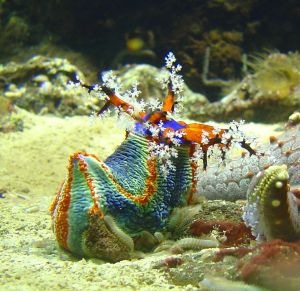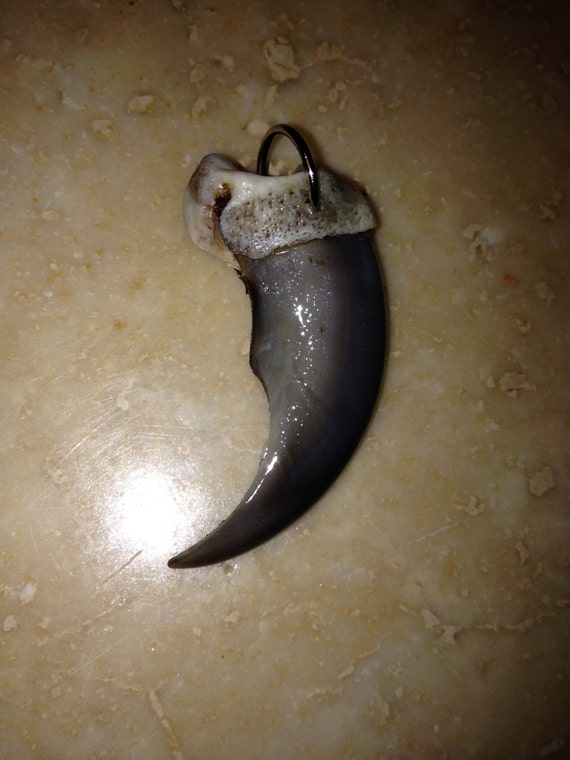Many natural materials have been used as amulets over thousands of years, due to their appearance, colour or properties. Fossils, stones and plants being some of these.
Out of all the fossils, my personal favourite and one of the most widely used is the ammonite, which gets its’ name from the Ancient Egyptian goat god Ammon, who’s horns it resembles. There is evidence that stone age man used ammonites as amulets. The Ancient Egyptians used them to evoke dreams or trance state (Rattcsh, C and Muller-Ebeling, E. The Encyclopedia of Aphrodisiacs. Google e-book found at: https://books.google.co.uk/books?id=QHZnAwAAQBAJ&printsec=frontcover&source=gbs_ge_summary_r&cad=0#v=onepage&q&f=false), this spread to Ancient Greece and Rome, where an ammonite placed beneath the pillow was protection against insomnia and bad dreams. A coin which has been dated 480BC, reads “The horn of Ammon, which makes beautiful dreams”. Some Romans believed that a pyritised ammonite can enable one to predict the future in a dream. From fossil folklore at the Natural History Museum in London, at nhm.ac.uk, in England, two legends arose around holy people turning a snakes into stones. St Hilda, who was a Saxon abbess in Whitby in the seventh century, was said to have cleared the ground to build the abbey from an infestation of snakes by praying.

Often heads were carved into the ammonites to make them ore saleable. St Keyna, in the south of England had the same power attributed to her.

In India, black limestone ammonites found in Nepal are called Saligrams and are sacred to the hindus as a chakra stone of the god Vishnu, Eight dividing lines of the chambers represent the eight chakras of absolute completeness and the eightfold path of enlightenment. Vishnu is often depicted holding the saligram.

In Feng Shui and Taoism, ammonites are seen as amulets to attract abundance and wealth. In New Guinea, tribes people carry them as amulets for hunting and growing. I have a small collection of ammonites which will be used in some of my jewellery. their mathematically perfect spiral and smoothness
Belemnites were thought to be thunderbolts or thunder stones, left when lightning strikes the earth, and, as it was said that lightning never strikes the same place twice, they were used as protection against being struck by lightening.

Toad stones are the fossilised teeth of the fish Lepdotes. They were often set into rings and jewellery in bitten to protect against poison and stings.


In Malta, Fossilised teeth of another fish, Sargus, was said to be serpents eyes from serpents cursed by the shipwrecked apostle, St. Paul. They were set in gold and given to papal envoys to Malta, even Henry the 5th of England owned some. Again, these were worn as protective amulets.
Crystals and gemstones are used as talismans, in jewellery, as protection or to bring about required circumstances. There are many books, charts and websites dedicated to these in the guise of New Age spirituality, such as this one.

The colours of gem stones can also be linked to the seven chakras and are used to stimulate the chakras when worn as jewellery or used in meditation or massage.

I will take a closer look at a few of the more prominent stones and ones which I would like to incorporate in my work.
Jade has been regarded as the most precious of stones in China for millennia, thought to have been the solidified sperm of the Chinese Dragon, it it often carved into shapes of animals or flowers and used in different forms as an amulet to protect from early death or from bad fortune, also as a charm for good fortune,for everlasting love and much more. It is still widely in use today. One of the earliest to be seen at the British Museum is a coiled dragon from the Hongshan culture from around 35000BC

Turquoise is one of the most popular stones, thought by the Aztecs to be the stone of the gods and linked by them and other native American tribes to the sky gods and rain. It has been used to guard the wearer against bad luck, failure, poverty to ensure success in hunting. In Turkey it was carried by horsemen to protect from injury from a fall. With other blue stones such as lapis lazuli, it was believed to have a regenerative power and was often used in jewellery and in amulets bound in a mummy’s bandages. The most common of these being the Djed Pillar, like this one at the British Museum, symbolising stability and endurance.

Plants and trees are among the natural objects used as amulets. This is unsurprising as many plants and trees have medicinal uses as well as bearing fruit or being edible. I found this beautiful illustration of the sacred trees of Ireland on http://imgarcade.com/1/ancient-irish-alphabet/.

The early Celts and native Americans believed that each type of tree had an essence which could be tapped into. Amulets carved from wood are wearable items which still maintain the essence of the trees that came from. The tree itself is also a sacred symbol, which crosses many continents, seen widely as the tree of life.
As parts of some plants can be short lived, representations of them have been widely accepted of bearing the same power, especially when worn as jewellery. The chilli pepper being one of these, used originally to protect against the evil eye and against infidelity, later as a good luck charm especially in Italy. Red plastic ones are commonplace, but the shape was also copied in gold or silver and morphed into a horn type pendant, known as the “corno”.


Shamrocks and clovers are other plants, which are short lived in their natural form. Sometimes they are encased in resin or glass, or pressed to make them more enduring, but often are recreated in metals, bejewelled, painted or enamelled as a widely accepted representation of the plant and as a good luck charm.




















































































 lacquer work, or inlays of rare and exotic materials. Subjects portrayed in netsuke include naturally found objects, plants and animals, legends and legendary heroes, myths and mystical beasts, gods and religious symbols, daily activities, and myriad other themes. Many netsuke are believed to have been talismans. These items eventually developed into highly coveted and collectible art forms. Today we see a broad range from “folk art” carvings to levels of sophistication some consider to be fine art.
lacquer work, or inlays of rare and exotic materials. Subjects portrayed in netsuke include naturally found objects, plants and animals, legends and legendary heroes, myths and mystical beasts, gods and religious symbols, daily activities, and myriad other themes. Many netsuke are believed to have been talismans. These items eventually developed into highly coveted and collectible art forms. Today we see a broad range from “folk art” carvings to levels of sophistication some consider to be fine art.


